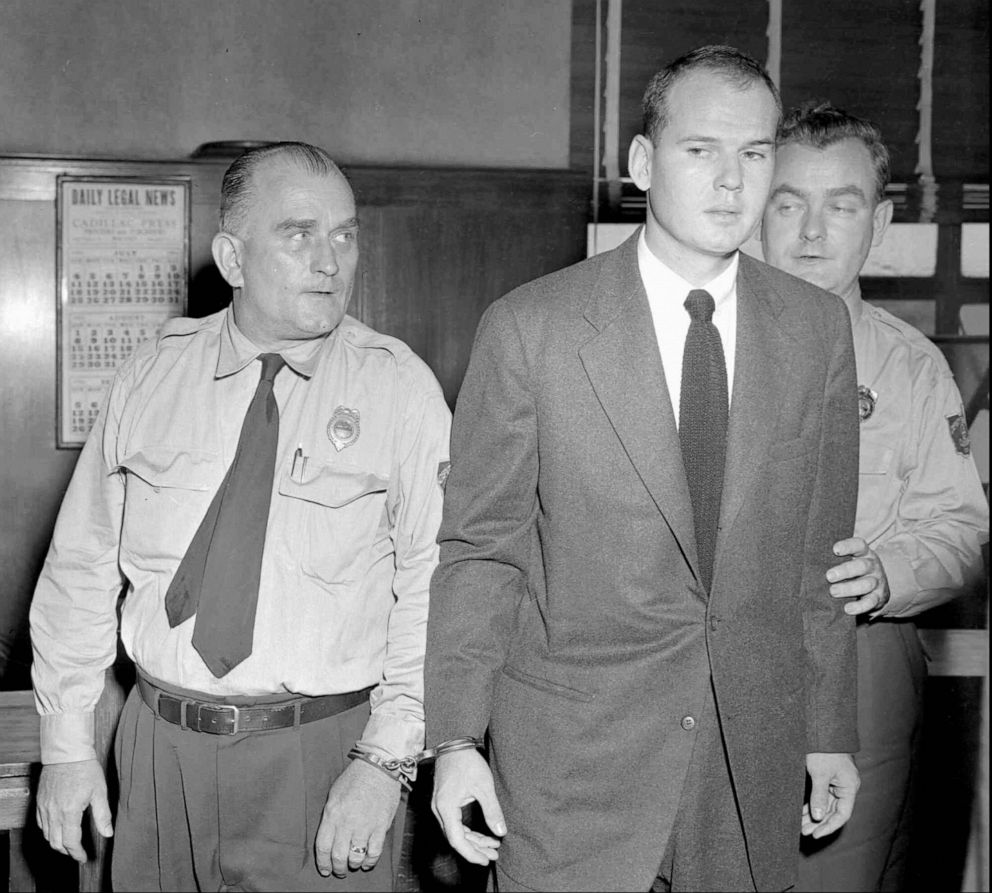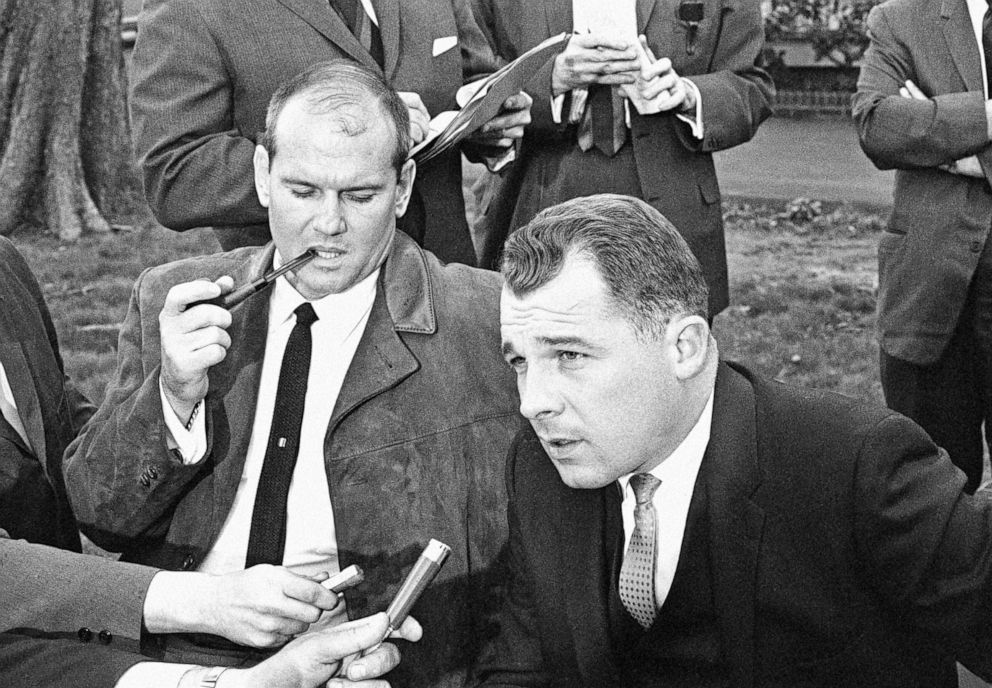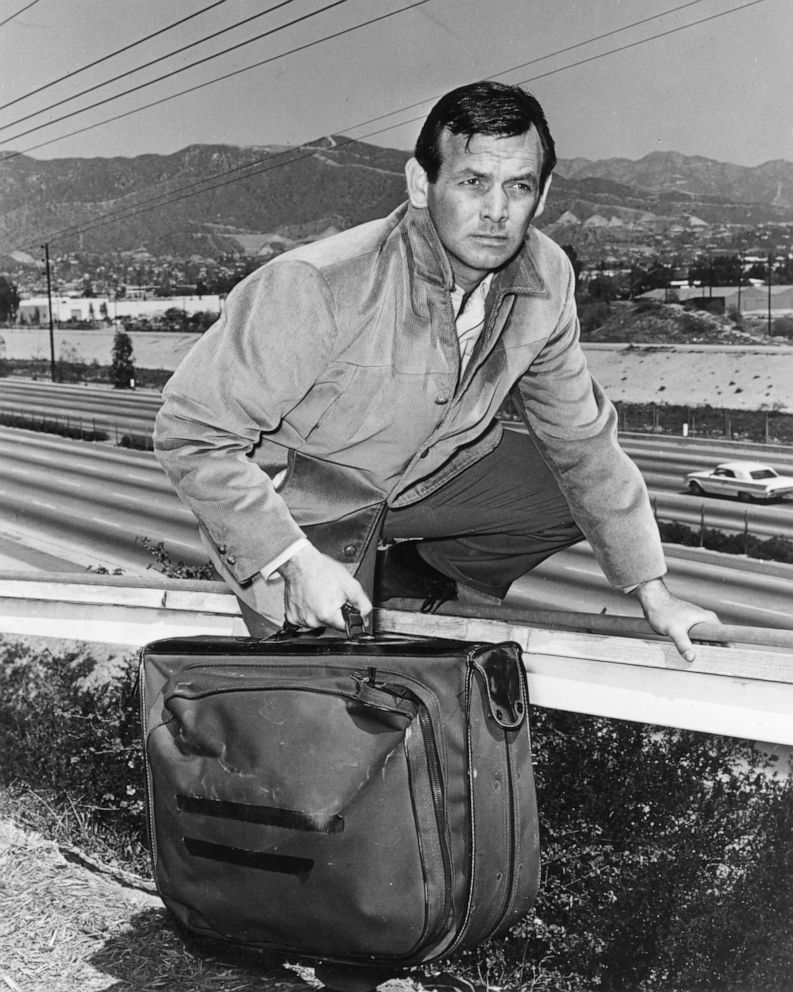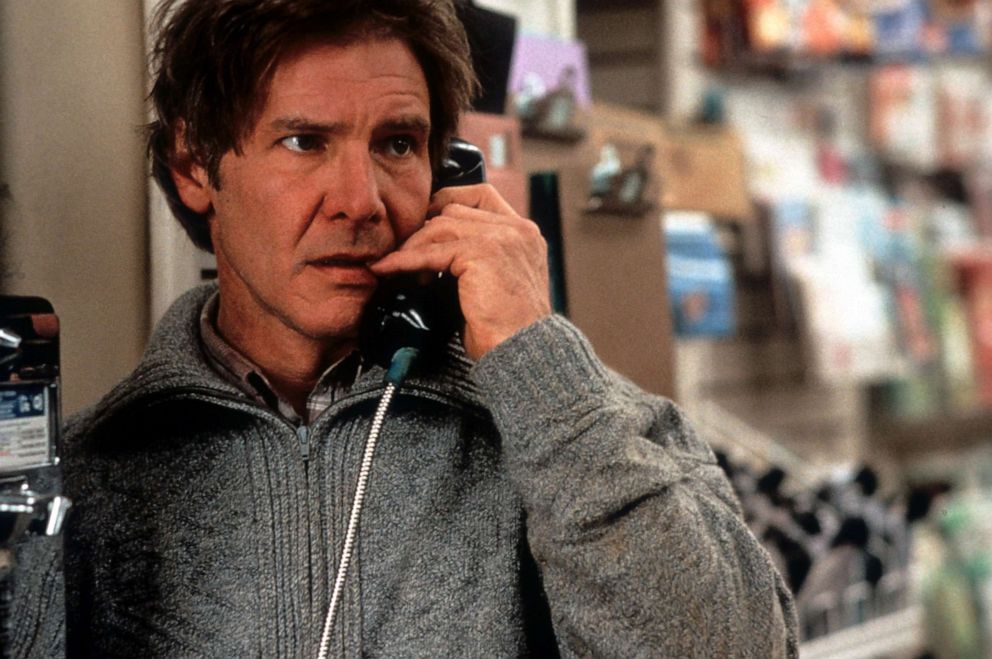Before US Marshals launched a manhunt for child murderer Lester Eubanks, there was 'The Fugitive'
This report is part of the ABC News podcast, "Have You Seen This Man?," hosted by 'The View's' Sunny Hostin. The podcast follows the U.S. Marshals' ongoing mission to find Lester Eubanks, a dangerous convict who escaped from police custody in 1973 and has never been found.
The escaped child murderer Lester Eubanks is the subject of one of the most intense manhunts in the U.S. today -- the U.S. Marshals have named him one of their Top 15 Most Wanted fugitives.
But he is neither the first nor the most famous criminal to grace the cell blocks of the Ohio State Penitentiary in Columbus.
Two years before Eubanks arrived on the now-shuttered prison's death row, its most famous inmate had just been released: the doctor, Sam Sheppard.

Sheppard, of Bay Village, Ohio, was the man who some believe served as one of the inspirations for the long-running 1960s television series "The Fugitive" and the hit 1993 Harrison Ford film of the same name.
The famed defense lawyer, F. Lee Bailey, who represented Sheppard in court, said in his 1971 book "The Defense Never Rests" that "more than 10 years later, the Sheppard case would serve as a model for the popular television show 'The Fugitive.'"
Although Bailey is perhaps best known for his defense of O.J. Simpson in the 1990s, one of his first landmark cases was the defense of Sam Sheppard.
Today, Bailey also says that former film producer and studio executive "Dan Melnick admitted to me that Sheppard was the inspiration for "'The Fugitive.'"
"It was the biggest crime probably of the decade," said David Meyers, a historian and author of "Inside the Ohio Penitentiary (Landmarks)." "You had this doctor -- young, handsome doctor -- and his attractive wife, had everything going for him, and she was murdered and he had this excuse about fighting off the bushy-haired man… It was made for television."

On July 3, 1954, police say an intruder entered Sheppard's home, knocked him unconscious and killed his wife, Marilyn. Sam Sheppard, an osteopathic physician, was arrested and charged with Marilyn Sheppard's murder.
Sam Sheppard claimed that a "bushy-haired man" knocked him out and then killed his wife, but a jury convicted him of second-degree murder, sparing him the death penalty.
The murder of Marilyn Sheppard made a huge splash across the country. Sam Sheppard was sentenced to life in prison, which would be served at the Ohio State Penitentiary.
Over the next 10 years, Sheppard's experience in prison mirrored that of Lester Eubanks'. Because of Sheppard's medical expertise and the buzz surrounding his trial, Meyers said, the prison granted him some special privileges, going so far as to remove him from the general population -- a freedom also earned by Eubanks .
"When someone like Sam Sheppard came in, who was a doctor, they were going to make use of his doctoring skills in one way or another," Meyers explained. "First, he was high profile, so [they] tried…to keep them out of general population as much as possible, because you don't want people…trying to make a name for themselves trying to be the guy that killed Sam Sheppard."
According to Meyers' book, Sam Sheppard even volunteered at the time to participate in a cancer study, in which he was injected with live cancer cells to monitor their growth rate. A prison biopsy later declared Sam Sheppard cancer free.
Nine years into Sheppard's life within the walls of the Ohio State Penitentiary, a television show bearing a slight resemblance to his story started airing: the original, broadcast version of "The Fugitive," starring David Janssen as Dr. Richard Kimble, an innocent man accused of murdering his wife.

In the television show, Kimble claimed a one-armed man had killed his wife -- Sam Sheppard had always said it was a bushy-haired man. Kimble escaped captivity and was hunted by the authorities, but Sam Sheppard remained behind bars for 10 years.
In 1964, Sam Sheppard's case was appealed all the way to the U.S. Supreme Court. The justices ruled that Sam Sheppard did not receive a fair trial, citing "inherently prejudicial publicity which saturated the community," thus preventing jurors from staying impartial. As a result, Sam Sheppard was granted a new trial.
"I talked to the Lieutenant of police who worked the case up in Cleveland, and he said if Sam Sheppard is innocent, I don't want to know it," said Bailey regarding his reason for taking the case. "This guy had been in jail, just about eight years at the time. So, I said, well, screw you guys, we'll go down to federal court."
Bailey explained that much of the evidence in the original case had been unreliable."By the time of the second trial, they never really should have gone to [the first] trial… The evidence they used to convict him, like he wouldn't take the police lie detector test -- ladies and gentleman, he's guilty… That was gone," Bailey said.
However, as the jury deliberated, Bailey noted that there was "a wrinkle." By 1966, "The Fugitive" had already been on television for three years, including two of the years in which Sam Sheppard was imprisoned.
"At the time we picked the jury in the 1966 trial, everybody was watching 'The Fugitive,' and the jury knew he was innocent," Bailey said. "I had a jury that really did have the presumption of innocence at the forefront. And I think eight of them told me after the fact," that they watched 'The Fugitive.'"
The prosecution apparently never addressed the fact that the jury could have been influenced. Asked if Prosecutor John Corrigan mentioned "The Fugitive," Bailey said it never came up. "He never thought to query the jurors. Blunder. Everyone knew ['The Fugitive'] was innocent. I gave the subject a wide berth," Bailey said.
The jury declared Sam Sheppard not guilty, and he would not return to the Ohio State Penitentiary. Sam Sheppard lived an equally colorful life after prison, temporarily debuting as a professional wrestler aiming to raise money for cancer awareness.
According to Meyers, Sam Sheppard's stage gimmick was the "special blood" he had that had resisted the cancer cell injection while he was in prison.
Sam Sheppard died just four years after his second trial before a jury, succumbing to liver failure at the age of 46. He left behind a son, Sam Reese Sheppard, who wrote a book about his father's case and in 1999 sued the state of Ohio in an attempt to get his father's conviction permanently thrown out. The suit was unsuccessful.
As for the "The Fugitive" film and television series, there is debate as to whether or not Sam Sheppard's life played a role in their inspiration. In a 1993 interview, Roy Huggins, the creator of the television series, told The Los Angeles Times that he wanted to distance himself from Sam Sheppard's story.

In that Los Angeles Times interview, Huggins said, "I suppose connecting Kimble to Sheppard makes a more sensational story. ... I wouldn't care as much...except that's not the way ['The Fugitive'] happened. [The news reports] are in reckless disregard of the truth."
Still, Bailey claims that "The Fugitive" is clearly based on Sam Sheppard's case, saying Huggins "wanted to claim an original idea, and [was] concerned about lawsuits.
David Twohy, the screenwriter of the 1993 version of "The Fugitive," speculated that, while Richard Kimble's story bears some resemblance to Sam Sheppard's, Huggins may have had good reason to deny any influence.
"I can't really speak to what was in Roy's head at the time in the '60s, but he did have good reason to deny the parallels to Sam Sheppard," Twohy said.
"If you're Roy Huggins and you're creating your TV show in 1961, '62, you're only five or six years removed from the actual murder, four or five years removed from the trial," Twohy explained. "One possibility is, Roy realized there were legal issues that he may not want to get involved in...and if Roy had a successful TV show on his hands, he didn't want to get involved in swaying the public one way or another in the Sam Sheppard case."
Twohy said he took inspiration from Victor Hugo's "Les Miserables" while writing the script -- the big chase scene at the resevoir is meant to mirror the pursuit in the sewer in the French epic. And like "Les Miserables," Twohy finds Sheppard's story to be more of a tragedy than the one in "The Fugitive."
"I actually pulled out the Sam Sheppard material six months ago and looked at it again... He does play out differently. He never goes on the run, and Sheppard's life is just a tragedy from beginning to end... It becomes much more a drama and an analysis, about how the media can sway these things and in its zeal become judge, the jury and executioner," Twohy said. "Maybe I should be doing a screenplay about this... I haven't acted on it yet, but it's still rumbling around in my head."
New episodes of "Have You Seen This Man?" are available on Wednesdays. Listen and subscribe on Apple Podcasts, Google Podcasts, iHeartRadio, Pandora, Spotify, Stitcher and TuneIn.




